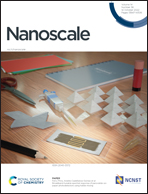Charge detection of a quantum dot under different tunneling barrier symmetries and bias voltages
Abstract
We report the realization of a coupled quantum dot (QD) system containing two single QDs made in two adjacent InAs nanowires. One QD (sensor QD) was used as a charge sensor to detect the charge state transitions in the other QD (target QD). We investigated the effect of the tunneling barrier asymmetry of the target QD on the detection visibility of the charge state transitions in the target QD. The charge stability diagrams of the target QD under different configurations of barrier-gate voltages were simultaneously measured via the direct signals of electron transport through the target QD and via the detection signals of the charge state transitions in the target QD revealed by the sensor QD. We find that the complete Coulomb diamond boundaries of the target QD and the transport processes involving the excited states in the target QD can be observed in the transconductance signals of the sensor QD only when the tunneling barriers of the target QD are nearly symmetric. These observations were explained by analyzing the effect of the ratio of the two tunneling rates on the electron transport processes through the target QD. Our results imply that it is important to consider the symmetry of the tunnel couplings when constructing a charge sensor integrated QD device.



 Please wait while we load your content...
Please wait while we load your content...